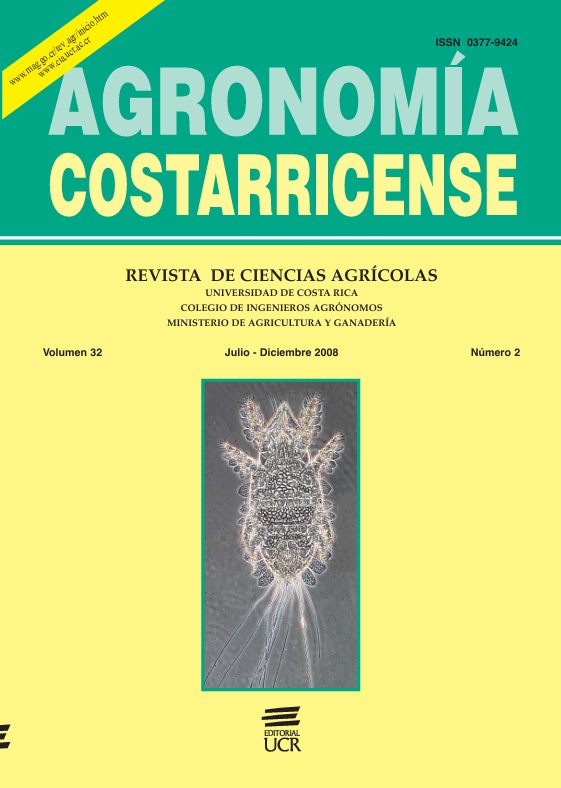Abstract
Land capability of the area of study was determined and a proposal for appropriate use was made using the Land Capability Methodology proposed by the Ministry of Agriculture and Livestock of Costa Rica. The soils of the farms sampled were being cultivated for vegetables (66.5%), pastures (22.9%), and in a lower scale by forests, fallow and flowers. The land capability consisted of 10.5% Class II, 38.1% Class III, 21.9% Class IV, 1.8% Class V, 8.9% Class VI, 17.8% Class VII and 1% Class VIII. Some 60% of the farms were in Classes III and IV, where the limitations were slope, erosion, effective depth and soil fertility. Some 25% of the farming areas showed appropriate use, 25% were slightly over-utilized and 36% were severely over-utilized. It is proposed that the conflict can mbe corrected by intensive management practices and soil conservation and in areas of greater slope by a change in use to high altitude fruit trees. In the lots of Class VII with grass cover, the planting of forests is recommended. For the study area, the land use potential was truck crops 57%, pastures 20%, perennial crops or fruit trees 13%, and 10% for reforestation. Water erosion in the agricultural activities in the middle watershed does not limit the productivity of the zone: some 90% of the lots showed light to moderate erosion with slopes less than 30%. Other factors that affect thesoil and water deterioration were openmine extraction, natural landslides and the lack of control structures for flow and sediments in the earth roadways.
##plugins.facebook.comentarios##

This work is licensed under a Creative Commons Attribution-NonCommercial-NoDerivatives 4.0 International License.
Copyright (c) 2016 Agronomía Costarricense


